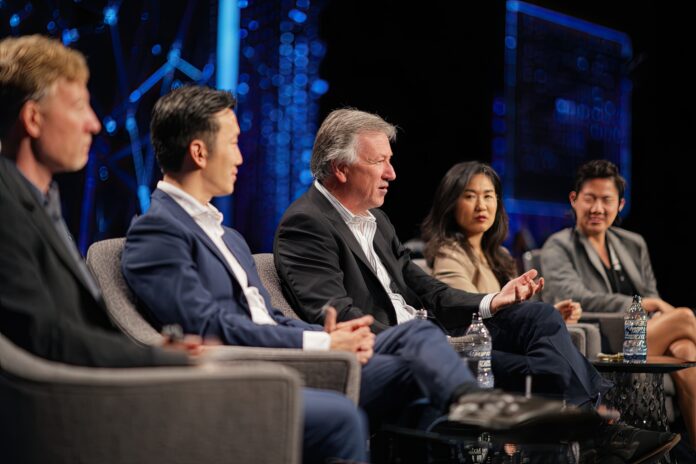The Changing Tone in Artificial Intelligence Leadership
Loudest Voices in AI have dramatically shifted over the past two years, and the shift is rippling across the tech landscape. In 2021 and 2022, the same influential CEOs, researchers, and founders who pioneered advanced language models and computer vision systems were urgently warning of AI’s risks. Their message was clear: unchecked algorithms could warp truth, threaten jobs, and even destabilize societies. Calls for regulation echoed at the highest levels of government, with open letters and congressional testimony from tech leaders urging lawmakers to act quickly.
But by the middle of 2024, the industry’s tone had decisively changed. Instead of rallying around the need for strict oversight, many of the tech sector’s most powerful voices now argue that too much regulation could derail the very innovations that made the United States an AI powerhouse. They urge policymakers to loosen the reins and “unleash” American innovation, believing the greatest risk isn’t progress—but falling behind.
From ‘Regulate Us’ to ‘Unleash Us’: Understanding the Shift
The reasons behind this evolution among the loudest voices in AI are nuanced and complex. Most importantly, the pace of technological advancement has outstripped even the boldest predictions. Foundation models like GPT-4, Gemini, and Llama have pushed boundaries, attracting vast investments and promising breakthrough applications across medicine, science, and business.
Initially, industry leaders urged caution because of profound anxieties over ethical, legal, and social hazards posed by powerful AI systems. There was broad agreement that clear guardrails were necessary to maintain public trust, prevent harmful misuse, and head off existential risks. In March of 2023, hundreds of experts and executives signed public statements warning of catastrophic possibilities. News outlets like The New York Times chronicled these high-profile warnings. Tech luminaries and policymakers seemed united: AI needed rules, fast.
However, by late 2023, discussions in boardrooms and think tanks began to shift. As global competition intensified—especially from China and the European Union—the mood pivoted from caution to urgency. U.S. experts and investors warned that excessive regulation, or a one-size-fits-all approach, might sideline American companies and send talent overseas. The loudest voices in AI now argued that embracing responsible innovation, not regulatory restraint, was the surest path to technological and economic leadership.
Key Drivers Behind the Pivot
To understand why these leaders changed direction, consider three primary drivers:
- Staggering Progress: AI models dramatically improved, showcasing capabilities in language, image processing, and scientific discovery that outpaced public expectations. Startups and labs were able to translate these advances into new products rapidly.
- Geopolitical Pressures: Policymakers, especially in Washington, realized that technological dominance had become a new frontier in global power politics. China’s significant investments and regulatory flexibility pushed U.S. leaders to prioritize speed and innovation over bureaucracy.
- Regulatory Bottlenecks: Frustration grew over the slow pace of legislative action and the complexity of implementing nuanced, effective rules. Executives warned that heavy-handed laws risked stifling entrepreneurship and could impede vital research and deployment in fields ranging from healthcare to clean energy.
Because of these forces, the largest AI firms and their investors pivoted. By emphasizing American competitiveness and the jobs and economic growth promised by AI, they reframed the debate. Most major industry conferences in 2024, from SXSW to the AI Summit, featured keynote speakers calling on Congress not to overregulate. Their chorus: “Let AI transform the world. Unleash us—not restrain us.”
The Current Landscape: Competing Narratives
Of course, this change in messaging sparked intense debate. While some industry leaders argue that the U.S. government must support AI leadership with “innovation-friendly” frameworks, others worry that a reckless approach could fuel everything from algorithmic discrimination to disinformation and surveillance abuses.
Academics, civic advocates, and many in the AI Ethics community—such as those highlighted in a recent Brookings article—continue to push for meaningful guardrails. They argue the loudest voices in AI risk downplaying real harms in the rush for market dominance. Open letters, coalition-building, and grassroots campaigns remind regulators of the high stakes involved, from civil rights considerations to national security.
Meanwhile, within tech circles, even those now advocating for less regulation publicly acknowledge the need for certain standards related to safety, transparency, and accountability. What they often dispute is who should set those standards and how quickly they should evolve.
Why This Matters Globally
This debate doesn’t just influence U.S. policy. Other countries look to American decisions as a blueprint or cautionary tale. The EU’s landmark AI Act, for instance, shows what happens when lawmakers move first—sometimes leaving local firms struggling with new compliance burdens, which can slow growth. Global governance of AI, therefore, remains tangled in these shifting priorities. Most importantly, every move by an American tech leader or policymaker sets off a domino effect worldwide.
The Path Forward: Bridging Innovation and Responsibility
So, what comes next? The answer isn’t simple. In all likelihood, a balanced, adaptive approach to AI oversight will emerge—one that supports innovation while ensuring guardrails are tight enough to prevent abuse. Collaboration between industry, policymakers, and civil society will be essential. As the loudest voices in AI continue to shape the conversation, it’s crucial to ground public policy in transparent, accountable frameworks that earn trust and accelerate genuine progress.
For now, expect ongoing tensions as stakeholders vie for influence over the future of artificial intelligence. The pendulum may swing back and forth, but the stakes—for innovation, economic growth, and societal well-being—have never been higher.
For deeper insights and regular updates on this debate, consult resources such as the Stanford AI Index and thought pieces from MIT Technology Review. Thoughtful, informed engagement will help ensure that the loudest voices in AI lead toward a future that is prosperous, safe, and inclusive for all.



